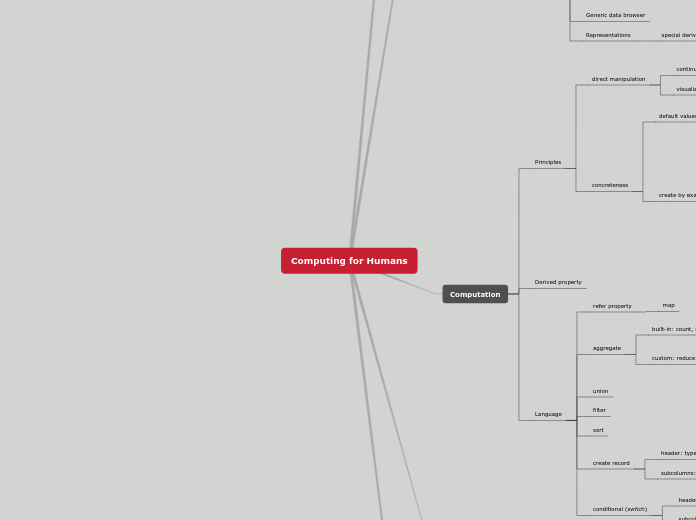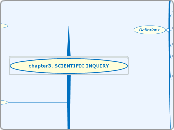MTE 280 Investigating Quantity
Whole Numbers
SubtractionModels/ Properties
· Take Away model: this problem is characterized by startingwith a quantity and remaining some from the initial amount
· Missing Addend Model: The need todetermine what quantity must be added to a specific quantity
· Comparison Model: Comparing twoquantities to determine how much larger or smaller one of the quantities isthan the other
· Linear Model: Is on a number line usingarrows to show change
· Commutative Property: setting the numberequal to one another and switching the number sequences.
· Associative property: Removing andplacing the parenthesis on different sets of the equation to see if theequation set is made true
DivisionModels/ Properties
· Partition: Distributing a certain quantityamong a specified number of groups
· Measurement: Using a given quantity tocreate groups of a specified size to determine the number of groups formed
· Dividend? Divisor: Quotient of aquantity
MultiplicationModels
· Factor X Factor: multiplying twoquantities and receiving a product
· Repeated Addition Set: Repeatedly addinga quantity of objects a specified number of times
· Repeated Addition Linear: Repeatedlyadding a quantity of continuous numbers
Number Theory
· The Divisibility test is a shorthand way of determining whether a given integer is divisible by a fixed divisor without performing the division,
· The Factor Rainbow is a rainbow-shaped diagram that factors of a number in pairs.
Strategies
· The Decomposition strategy is the process of separating numbers into their components (to divide a number into smaller parts).
· The Compensation strategy is a mental math strategy for subtraction that involves changing the subtrahend to a "friendly number" then adjusting the answer.
· Base 10 blocks are a mathematical manipulative used to teach basic mathematical concepts like place value, addition, subtraction, number sense, and counting.
Algorithms
· The Partial Sums Algorithm is most useful when adding multi-digit numbers. The way the Algorithm works is working out one place value at a time and then adding the partial sums to the total sum.
· Traditional Algorithm consists of adding the same place values numbers together and not skipping or adding the tens place with the ones place or the ones place with the hundreds place.
· The traditional algorithm works for subtraction, addition, and multiplication with the same process of knowing where the numbers are at in the multi-digit number.
· Expanded Notation: Is the method of pulling a number apart and expressing it as a sum of the values of each digit.
· Expanded notation ion multiplication: Writing a number to show the value of each digit. It is shown as a sum of each digit multiplied by its matching place value.
Properties
Inverse
Equality
Dividend/Divisor
Identity
Zero
Distributive over addition
Distributive over subtraction
Commutative
Closure
Associative
subtraction
Identity Property of Subtraction
Associative Property of Subtraction
Commutative property of Subtraction
Models
Division
Measurement
Partition
Multiplication
Repeated Addition Linear
Repeated Addition
Factor X Factor
Area
Addition
number-line
Subtraction
Linear
Comparison
Missing Addend
Take away
Intergers
Operations:
· To subtract integers, change the sign on the integer that is to be subtracted. If both signs are positive, the answer will be positive. If both signs are negative, the answer will be negative. If the signs are different subtract the smaller absolute value from the larger absolute value.
· Adding two positive integers always yields a positive sum; adding two negative integers always yields a negative sum. To find the sum of a positive and a negative integer, take the absolute value of each integer and then subtract these values.
· The product of two positive integers or two negative integers is positive. The product of a positive integer and a negative integer is negative.
Concepts:
· Number Line helps students visualize number sequences and demonstrate strategies for counting, comparing, adding, subtracting, multiplying, and dividing
· Absolute Value: the magnitude of a value without relation to the sign that is placed in front of or behind the number.
· Chip model: chips that represent a value of number this model works for addition adding chips to a group or subtraction subtracting chips from a value.
Concepts
Operations
Numeration Systems
· Hindu-Arabic is the most common numeration system and it is also known as the decimal system.
· The Decimal Number System uses the powers of (10)
· Examples of the Decimal System: 0, 1, 2, 3, 4, 5, 6, 7, 8, and 9
· Deci = 10
· No = 9
· A positional numeral system is a system for representation of numbers by an ordered set of numerals symbols called digit in which the value of a numeral symbol depends on its position.
Systems
Tally
Roman
Egyptian
Mayan
Hindu-Arabic
Bases
• Numbers one (1) and greater are counting numbers or natural numbers
• Numbers 1-10 are natural numbers because they are the first numbers that we learn in school
• The number zero (0) is a whole number also known as an integer or a number without a fraction









